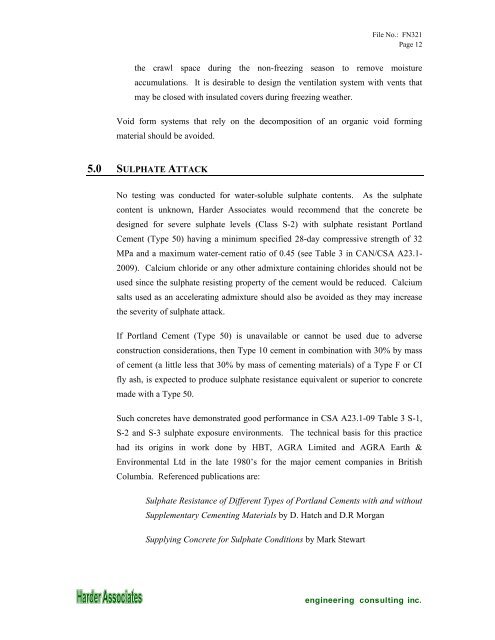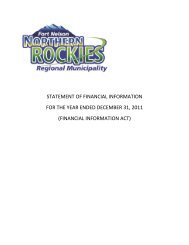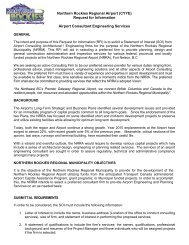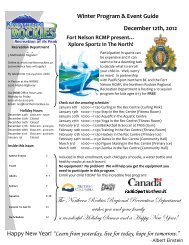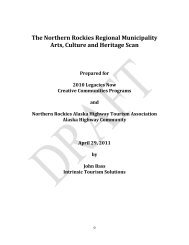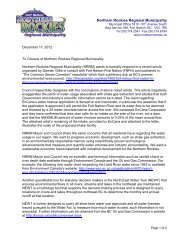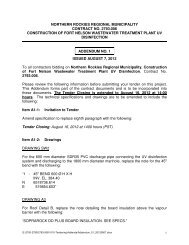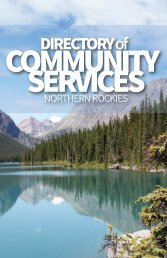SPECIFICATIONS
Tender Documents.pdf - Northern Rockies Regional Municipality
Tender Documents.pdf - Northern Rockies Regional Municipality
You also want an ePaper? Increase the reach of your titles
YUMPU automatically turns print PDFs into web optimized ePapers that Google loves.
File No.: FN321<br />
Page 12<br />
the crawl space during the non-freezing season to remove moisture<br />
accumulations. It is desirable to design the ventilation system with vents that<br />
may be closed with insulated covers during freezing weather.<br />
Void form systems that rely on the decomposition of an organic void forming<br />
material should be avoided.<br />
5.0 SULPHATE ATTACK<br />
No testing was conducted for water-soluble sulphate contents. As the sulphate<br />
content is unknown, Harder Associates would recommend that the concrete be<br />
designed for severe sulphate levels (Class S-2) with sulphate resistant Portland<br />
Cement (Type 50) having a minimum specified 28-day compressive strength of 32<br />
MPa and a maximum water-cement ratio of 0.45 (see Table 3 in CAN/CSA A23.1-<br />
2009). Calcium chloride or any other admixture containing chlorides should not be<br />
used since the sulphate resisting property of the cement would be reduced. Calcium<br />
salts used as an accelerating admixture should also be avoided as they may increase<br />
the severity of sulphate attack.<br />
If Portland Cement (Type 50) is unavailable or cannot be used due to adverse<br />
construction considerations, then Type 10 cement in combination with 30% by mass<br />
of cement (a little less that 30% by mass of cementing materials) of a Type F or CI<br />
fly ash, is expected to produce sulphate resistance equivalent or superior to concrete<br />
made with a Type 50.<br />
Such concretes have demonstrated good performance in CSA A23.1-09 Table 3 S-1,<br />
S-2 and S-3 sulphate exposure environments. The technical basis for this practice<br />
had its origins in work done by HBT, AGRA Limited and AGRA Earth &<br />
Environmental Ltd in the late 1980’s for the major cement companies in British<br />
Columbia. Referenced publications are:<br />
Sulphate Resistance of Different Types of Portland Cements with and without<br />
Supplementary Cementing Materials by D. Hatch and D.R Morgan<br />
Supplying Concrete for Sulphate Conditions by Mark Stewart


